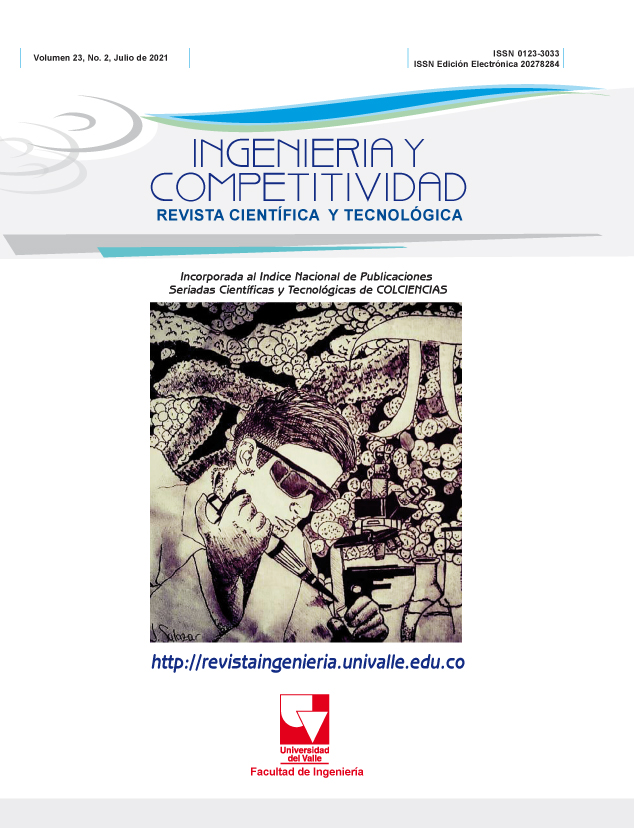Factibilidad de aplicación de la tecnología de recuperación mejorada de hidrocarburos con microorganismos (MEOR) en yacimientos del campo Pilón, distrito Morichal, estado Monagas
Contenido principal del artículo
El presente trabajo de investigación surge en relación con las necesidades de la industria petrolera para producir aquellos yacimientos del Distrito Morichal, poseedores de altas reservas remanentes, donde MEOR simboliza una alternativa biotecnológica, efectiva y rentable que emplea la inyección de microorganismos como una estrategia adicional a los tratamientos convencionales de recuperación mejorada de hidrocarburos. Distintos campos petroleros situados en diversas partes del mundo han implementado este proceso con enfoques y expectativas similares, sin embargo, los resultados han tenido discrepancias, puesto que las bacterias se ven afectadas significativamente por las variaciones en las condiciones del subsuelo, es por ello, que se diseñó una metodología de selección de pozos candidatos para llevar a cabo esta técnica, donde se exhibe el ambiente más idóneo para tales fines, aunado a ello, se establecieron ciertas correlaciones a partir de programas estadísticos para predecir tanto el %AyS como el %FR, que representan aspectos importantes para cotejar y garantizar que tan factible puede ser el proceso MEOR en esta área potencialmente importante dentro del contexto petrolero, acotando que las mismas arrojaron estimaciones satisfactorias en los pozos particularmente en estudio pertenecientes al Campo Pilón, pues incidieron en promedio en un incremento del 38% en el factor de recobro y un descenso aproximado en el corte de agua de 16% proyectando expectativas optimistas referente al éxito de este proceso.
- distrito morichal
- MEOR
- bioproductos
- recuperacionmejoradadehidrocarburos
(1) Hernández Rivera M, Ojeda Morales U, Martinez Morales A. Recuperacion Mejorada de Petróleo asistida por Microorganismos con capacidad de sintetizar Biosurfactantes. Journal of Basic Sciences. 2019;5(15):55–81. https://doi.org/10.19136/jobs.a5n15.3569.
(2) Afanasjeva N, Lizcano W, Aristizabal N, Mañozca I. Electrodeposición de Vanadio y Níquel de los Asfáltenos de Crudos
Pesados. Revista de Ingeniería y Competitividad. 2015;17(2):9-17. https://doi.org/10.25100/iyc.v17i2.2184.
(3) Bahadori A. Fundamentals of Enhanced Oil and Gas Recovery from Conventional and Unconventional Reservoirs. Lismore, NSW, Australia: Gulf Professional Publishing; 2018.
(4) Safdel M, Anbaz MA, Daryasafar A, Jamialahmadi M. Microbial enhanced oil recovery, a critical review on worldwide implemented field trials in different countries. Renewable and Sustainable Energy Reviews. 2017;(74):159–172. http://dx.doi.org/10.1016/j.rser.2017.02.045.
(5) Niu J, Liu Q, Lv J, Peng B. Review on microbial enhanced oil recovery: Mechanisms, modeling and field trials. Journal of Petroleum Science and Engineering. 2020;192(107350):1–11. https://doi.org/10.1016/j.petrol.2020.107350.
(6) Zhang J, Gao H, Xue Q. Potential applications of microbial enhanced oil recovery to heavy oil. Critical Reviews in Biotechnology. 2020;40(4):459-74. https://doi.org/10.1080/07388551.2020.1739618.
(7) Beyer WH. Handbook of Tables for Probability and Statistics. 2.ª ed. Akron, Ohio: CRC Press, Inc.; 2018.
(8) Rodriguez HM, Souraki Y, Leon MF, Bezerra R, Peña G, Guitian J, Escobar E. Design of a Cyclic Steam Stimulation Pilot Test for the Orinoco Oil Belt. A New Vision About Steam Injection Flow Rates. Society of Petroleum Engineers. 2017; SPE-188651-MS:1–23. https://doi.org/10.2118/188651-MS.
(9) Yang Z, Li X, Chen H, PetroChina Research Institute of Petroleum Exploration&Development, Ramachandran H, The University of Texas at Austin, et al. Development Optimization for Improving Oil Recovery of Cold Production in Foamy Extra-Heavy Oil Reservoir. Society of Petroleum Engineers. 2019; SPE-194628-MS: 1-16. https://doi.org/10.2118/194628-MS.
(10) Marfissi S, Lujan A. Inyección de Gas Caliente como Sistema de Levantamiento Artificial para Producción de Crudos Pesados en la Faja del Orinoco [Internet]. Oil Production.Net. 2011 [citado 13 septiembre 2018]. Available from: http://oilproduction.net/produccion/artificial-lift-systems/gas-lift-bombeo-neumatico/item/1778-inyeccion-de-gas-caliente-como-sistema-de-levantamiento-artificial-para-produccion-de-crudos-pesados-en-la-faja-del-orinoco.
(11) Petróleos de Venezuela (PDVSA). Parámetros petrofísicos de los pozos del yacimiento Oficina 01, División Carabobo. Faja Petrolífera del Orinoco; 2018 pp. 1–20.
(12) Gao C. Experiences of microbial enhanced oil recovery in Chinese oil fields. Journal of Petroleum Science and Engineering.
;166(Jul 2018):55–62. https://doi.org/10.1016/j.petrol.2018.03.037.
(13) Sheehy J. Field Studies of microbial EOR. In: SPE/DOE Enhanced Oil Recovery Symposium, 22-25 April, Tulsa, Oklahoma. 1990;(20254):1–6. https://doi.org/10.2118/20254-MS.
(14) Partidas C, Trebbau G, Smith T. Microbes aid heavy oil recovery in Venezuela. Oil & Gas Journal. 1998;96(24):62–64.
(15) Burchfield TE, Bryant, RS. Selective plugging in watered out oil reservoirs. In: Proceedings of the symposium on applications of microorganisms to petroleum technology. Bartsville, OK, USA: National Inst. for Petroleum and Energy Research; 1988.
(16) Saavedra, L. Recuperación Microbiana de Hidrocarburos. Universidad Autónoma Gabriel René Moreno UAGRM, Santa Cruz- Bolivia; 2014.
(17) Lazar I, Petrisor I, Yen T. Microbial Enhanced Oil Recovery (MEOR). Petroleum Science and Technology. 2007;25(11):1353–66. https://doi.org/10.1080/10916460701287714.
Descargas

Esta obra está bajo una licencia internacional Creative Commons Atribución-NoComercial-CompartirIgual 4.0.
Los autores que publican en esta revista están de acuerdo con los siguientes términos:
Los autores ceden los derechos patrimoniales a la revista y a la Universidad del Valle sobre los manuscritos aceptados, pero podrán hacer los reusos que consideren pertinentes por motivos profesionales, educativos, académicos o científicos, de acuerdo con los términos de la licencia que otorga la revista a todos sus artículos.
Los artículos serán publicados bajo la licencia Creative Commons 4.0 BY-NC-SA (de atribución, no comercial, sin obras derivadas).





